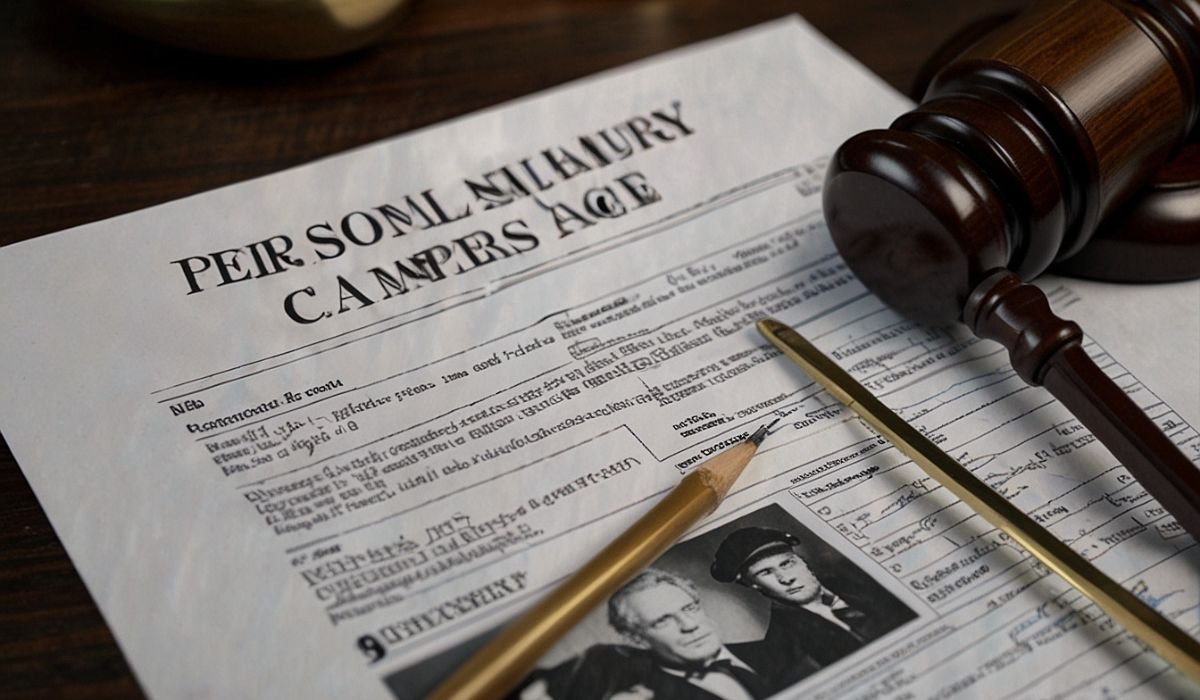When someone else’s negligence causes you harm, you may be entitled to compensation through a personal injury claim. In fact, in the U.S. alone, 39.5 million personal injury cases requiring medical treatment occur every year, that’s roughly 126 cases per 1,000 people
Understanding personal injury case types can help you determine whether you have a valid claim and what compensation you might be entitled to receive. From car accidents to medical malpractice, personal injury lawsuits take many forms, each with unique legal requirements and considerations.
Knowing the difference between various types of personal injury claims can significantly impact your case’s outcome and the compensation you receive for your injuries.
Motor Vehicle Accidents: The Leading Cause of Personal Injury Claims
Motor vehicle accidents remain the most common source of personal injury claims in the United States. These cases involve complex liability issues and often require extensive investigation to determine fault. Many victims don’t realize they can seek compensation beyond what insurance companies initially offer.
Slaughter & Lupton Law PLLC handles all varieties of automobile accident cases, employing accident reconstruction experts and medical specialists to build compelling cases for their clients. Their approach focuses on maximizing compensation while allowing clients to focus on recovery.
1. Car Accident Cases
Car accidents represent the largest category of personal injury case types. These cases typically involve proving another driver’s negligence through evidence like police reports, witness statements, and expert testimony.
Recent changes in car accident litigation include increased focus on distracted driving evidence and the growing complexity of cases involving rideshare vehicles. Courts now routinely admit cell phone records and vehicle data systems as evidence of driver inattention.
2. Motorcycle Accident Claims
Motorcycle accident victims often face unfair bias in the legal system. Insurance companies frequently attempt to portray motorcyclists as reckless, regardless of the accident’s actual circumstances.
Successful motorcycle claims require overcoming this prejudice while documenting the often catastrophic injuries that result from these accidents. Brain injuries, spinal damage, and road rash injuries typically require extensive medical documentation and expert testimony.
3. Commercial Truck Accident Litigation
Truck accidents involve multiple potentially liable parties, including drivers, trucking companies, vehicle manufacturers, and maintenance providers. These common personal injury cases involve specialized federal regulations that don’t apply to standard vehicle accidents.
Hours-of-service violations, improper loading, and inadequate maintenance records often provide crucial evidence in these cases. Victims may pursue claims against multiple defendants simultaneously.
Premises Liability: When Property Conditions Cause Harm
Premises liability claims arise when unsafe property conditions lead to injuries. Property owners have a legal duty to maintain safe environments for visitors, and failing to do so can result in significant liability.
4. Slip and Fall Accidents
Slip and fall accidents require proving that a property owner knew or should have known about a dangerous condition but failed to address it. Successful claims typically need documentation of the hazardous condition, preferably photographs taken immediately after the incident.
Recent court decisions have emphasized the importance of proving that hazards existed for a reasonable period, giving owners time to discover and remedy them. These types of personal injury claims often hinge on surveillance footage and maintenance records.
5. Swimming Pool and Recreational Facility Accidents
Swimming pools and recreational facilities present unique liability challenges under the “attractive nuisance” doctrine. This legal principle holds property owners responsible for injuries to children drawn to potentially dangerous features like pools.
Pool owners must provide proper fencing, covers, alarms, and supervision to prevent accidents. Failure to meet these standards often results in significant liability for resulting injuries.
Medical Malpractice: When Healthcare Providers Fall Short
Medical malpractice occurs when healthcare providers deviate from the standard of care, causing patient harm. These personal injury lawsuit examples are among the most complex cases, requiring extensive medical expertise.
6. Surgical Errors and Their Devastating Impact
Preventable surgical mistakes include wrong-site surgeries, retained foreign objects, and anesthesia errors. These cases often involve catastrophic consequences for patients, including permanent disability or death.
Medical malpractice statutes of limitations often include discovery rules that start the clock when patients discover their injuries, rather than when the error occurred. This distinction is crucial for surgical error victims who may not immediately recognize malpractice.
7. Misdiagnosis and Delayed Diagnosis Claims
Diagnostic errors account for a significant percentage of medical malpractice claims. These cases require establishing what a reasonable doctor would have diagnosed given the same symptoms and information.
Successfully proving these claims typically requires extensive medical records, expert testimony establishing the standard of care, and documentation of how the delayed or incorrect diagnosis worsened the patient’s condition.
8. Medication Errors
Medication errors can occur at multiple points: prescribing, dispensing, or administering. These errors may involve doctors, nurses, pharmacists, and healthcare facilities, creating complex liability questions.
Evidence in these cases often includes pharmacy records, medication orders, and expert analysis of how the error affected the patient’s health outcome. Multiple parties may share liability for a single medication error.
Beyond property hazards, an alarming number of personal injuries occur in the very places we seek healing, healthcare facilities where professional negligence can transform treatment into trauma.
Workplace Injury Cases: Beyond Workers’ Compensation
While workers’ compensation covers most workplace injuries, additional claims may be possible when third parties contribute to accidents. Understanding personal injury cases in the workplace context requires knowing when traditional litigation options exist.
9. Third-Party Liability in Workplace Accidents
Workers injured by defective equipment, toxic substances, or negligence of contractors can pursue claims beyond workers’ compensation. These claims allow for compensation types not available through workers’ comp, including pain and suffering.
Identifying liable third parties requires thorough investigation into everyone involved in a workplace setting, from equipment manufacturers to outside contractors working onsite.
10. Construction Site Accidents and Specialized Claims
Construction sites present unique hazards addressed by specialized regulations like New York’s Scaffold Law. These regulations create heightened responsibilities for construction site safety. OSHA violations documented during post-accident inspections often provide powerful evidence in construction injury litigation, establishing clear safety breaches that contributed to accidents.
Though medical settings present unique injury risks, many Americans face dangers in their workplace environments daily, where injuries extend beyond the scope of standard workers’ compensation coverage.
Final Thoughts on Navigating Personal Injury Claims
The landscape of personal injury case types continues to evolve with changing laws and technology. From traditional vehicle accidents to emerging areas like data privacy violations, understanding the specific requirements of your claim type is essential for success.
When severe injuries disrupt your life, knowing which category your case falls into helps determine the appropriate compensation and legal strategy. Remember that while many cases share common elements, each injury scenario presents unique challenges requiring specialized legal knowledge to navigate effectively.
FAQ: Common Questions About Personal Injury Cases
What’s the difference between claiming types of injuries in personal injury cases?
The injury type affects both liability and compensation. While soft tissue injuries like whiplash are common in vehicle accidents, catastrophic injuries like traumatic brain injuries typically result in larger settlements due to lifetime care needs and greater impact on quality of life.
How long does the typical personal injury case take to resolve?
Timeline varies by case complexity. Simple cases might settle within 3-6 months, while complex medical malpractice or product liability cases can take 2-3 years, especially when they proceed to trial rather than settlement.
What evidence is most important for personal injury claims?
Critical evidence includes medical records documenting injuries, accident reports, witness statements, photographs of the accident scene/injuries, and expert testimony establishing liability and damages. Preserving evidence immediately after an incident significantly strengthens most cases.
YOU MAY ALSO LIKE: Gladstein Law Firm: Louisville Injury Law Experts











